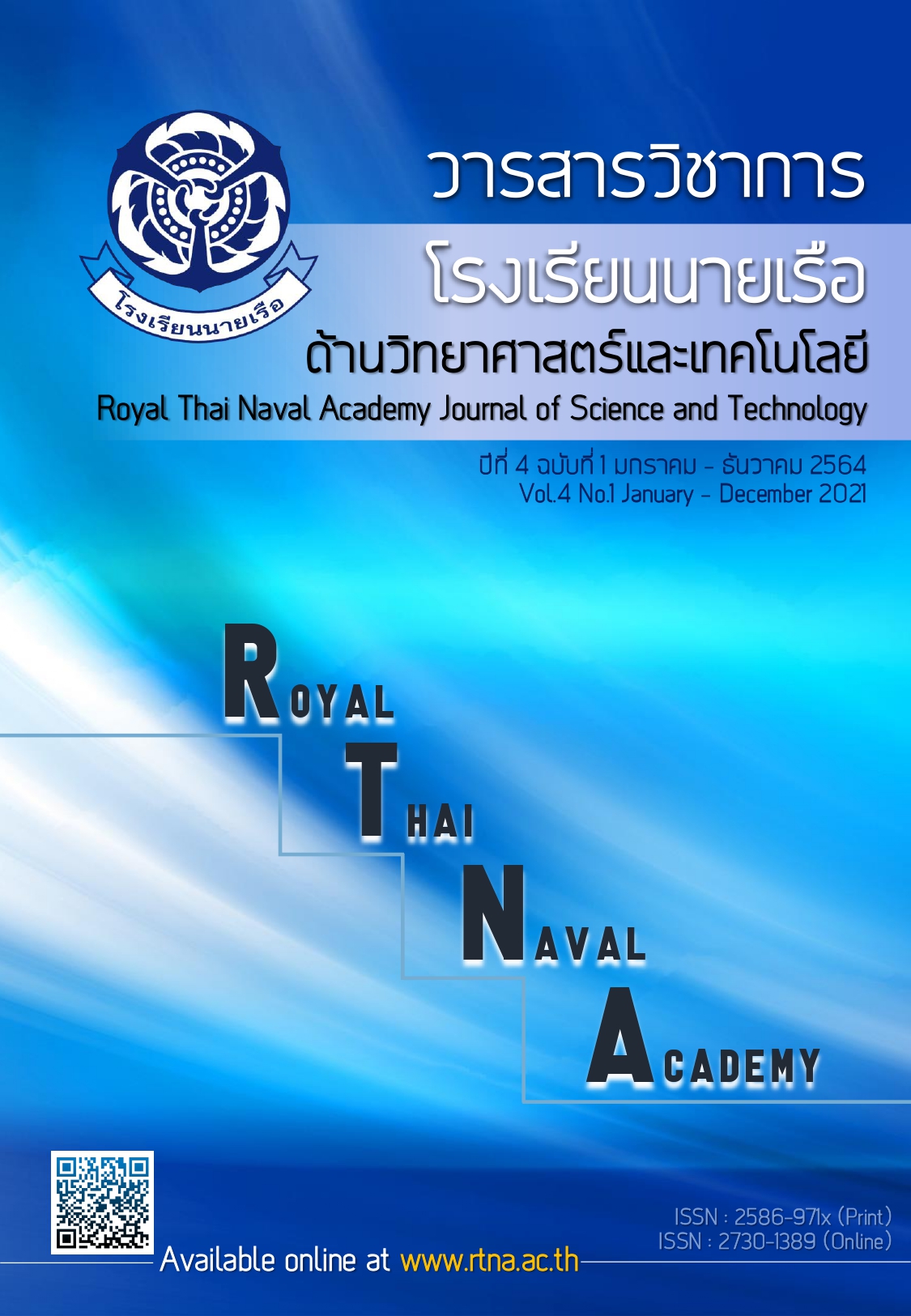Incorporating the Use of Time Series Remote Sensing Data to Assess the Vulnerability of the Thai Coast to Climate Change Induced Coastal Hazards
Main Article Content
บทคัดย่อ
The climate change has the direct and indirect effects on natural negative changing such as disasters, animal and forestry reduction and habitat loss. Coastal changes including accretion and erosion are also affected by climate change which tend to intensify. Samut Prakan and Chachoengsao are two of the coastal provinces in Thailand having high economic and population growth which lead to the increment of coastal land use and the destruction of coastal resources. In addition, the characteristics of muddy coasts in Samut Prakan and Chachoengsao are susceptible to sediment movements. These cause severe coastal erosion in Samut Prakan and Chachoengsao. This project aims to provide the data of coastal erosion/accretion in Samut Prakan and Chachoengsao, over 40 kilometres long, from 2017 to 2020. The rates of coastal changes would be generated and calculated by Digital Shoreline Analysis System (DSAS) v.5, the extension of ArcMap, based on the statistical concept of a linear regression. In addition, the image processing uses PlanetScope satellite imagery and the Normalised Difference Water Index (NDWI), spatial analysis function in ArcGIS, in water extraction process. The result shows that 40.33% of the study area are eroded while 59.67% are accreted. In addition, each part of study areas has different rates of shoreline changes depending on the diversity of coastal impacts and protections. Coastal protections including hard-engineered structures, soft protection structures and shoreline protection from nature, especially mangroves, as well as climate change are the main concerns of shoreline changes in this project analysis. The coastal protections play the vital role in preventing shoreline erosion from offshore factors, such as the intensify of winds, waves and marine disasters, and onshore factors, such as land subsidence and coastal land use. Furthermore, the result also infers that the order of coastal protection placement has the potential influences on preventing the shoreline from erosion as well as sedimentation increment of muddy coasts.
Article Details
เนื้อหาและข้อมูลในบทความที่ลงตีพิมพ์ในวารสารวิชาการโรงเรียนนายเรือ ด้านวิทยาศาสตร์และเทคโนโลยี ถือเป็นข้อคิดเห็นและความรับผิดชอบของผู้เขียนบทความโดยตรง ซึ่งกองบรรณาธิการวารสาร ไม่จำเป็นต้องเห็นด้วย หรือร่วมรับผิดชอบใด ๆ
บทความ ข้อมูล เนื้อหา รูปภาพ ฯลฯ ที่ได้รับการตีพิมพ์ในวารสารวิชาการโรงเรียนนายเรือ ด้านวิทยาศาสตร์และเทคโนโลยี ถือเป็นลิขสิทธิ์ของโรงเรียนนายเรือ หากบุคคลหรือหน่วยงานใดต้องการนำทั้งหมดหรือส่วนหนึ่งส่วนใดไปเผยแพร่ต่อหรือเพื่อกระทำการใด ๆ จะต้องได้รับอนุญาตเป็นลายลักษณ์อักษรจากโรงเรียนนายเรือก่อนเท่านั้น
เอกสารอ้างอิง
Nicu IC, Stalsberg K, Rubensdotter L, Martens VV, Flyen AC. Coastal erosion affecting cultural heritage in svalbard. A case study in Hiorthhamn (adventfjorden)-An abandoned mining settlement. Sustainability [Internet]. 2020 Mar [cited 2021 Apr 5]; 12(6):1–21. Available from: https://doi.org/10.3390/su12062306
Sheik, M., & Chandrasekar. (2011). A shoreline change analysis along the coast between Kanyakumari and Tuticorin, India, using digital shoreline analysis system. Geo-Spatial Information Science, 14(4), 282–293. https://doi.org/10.1007/s11806-011-0551-7
Saengsupavanich, C. (2013). Erosion protection options of a muddy coastline in Thailand: Stakeholders’ shared responsibilities. Ocean and Coastal Management, 83, 81–90. https://doi.org/10.1016/j.ocecoaman.2013.02.002
Stanchev, H., Stancheva, M., Young, R., & Palazov, A. (2018). Analysis of shoreline changes and cliff retreat to support Marine Spatial Planning in Shabla Municipality, Northeast Bulgaria. Ocean and Coastal Management, 156, 127–140. https://doi.org/10.1016/j.ocecoaman.2017.06.011
OECD. (2020). Economic Outlook Report Netherlands. 2020(1). Retrieved from https://issuu.com/oecd.publishing/docs/nld-eo-june-2020-29/2
Chowdhury, S. R., & Tripathi, N. K. (2013). Coastal erosion and accretion in Pak Phanang, Thailand by GIS analysis of maps and satellite imagery. Songklanakarin Journal of Science and Technology, 35(6), 739–748.
Yang, X., Zhao, S., Qin, X., Zhao, N., & Liang, L. (2017). Mapping of urban surface water bodies from sentinel-2 MSI imagery at 10 m resolution via NDWI-based image sharpening. Remote Sensing, 9(6), 1–19. https://doi.org/10.3390/rs9060596
Xu, H. (2006). Modification of normalised difference water index (NDWI) to enhance open water features in remotely sensed imagery. International Journal of Remote Sensing, 27(14), 3025–3033. https://doi.org/10.1080/01431160600589179
Cooley, S. W., Smith, L. C., Stepan, L., & Mascaro, J. (2017). Tracking dynamic northern surface water changes with high-frequency planet CubeSat imagery. Remote Sensing, 9(12), 1–21. https://doi.org/10.3390/rs9121306


